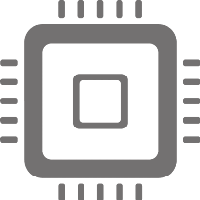Research Areas
The main research objectives of Area A are devoted to the development of novel topological materials, the investigation of the interplay of electronic correlations and spin-orbit coupling in topological systems, the exploitation of superconducting hybrid systems as seeds for emergent particles, such as Majorana- or parafermions, the interaction between light and matter with respect to axion electrodynamics, and hydrodynamic transport phenomena in electronic systems based on Dirac fermions.

Research area B is focused on materials and models of strongly interacting electrons, in particular those with local moments and non-trivial magnetic phenomena, together with their interplay with itinerant charge carriers as well as orbital and lattice degrees of freedom. Area B will tackle the following main goals: the search for and synthesis of novel magnetic quantum materials, the study and control of intertwined electronic orders, in particular in complex oxides and calchogenides, the creation and manipulation of nanostructures of quantum magnets, the investigation of quantum criticality in interacting topological systems beyond the Landau-Ginzburg-Wilson paradigm as well as the detection and classification of interaction-driven topological phases.

Topology as a new organizing principle opens up unprecedented possibilities in photonics, promising novel physics to be unraveled and exciting applications to be invented. Area C intends to explore topological states of light in both real and reciprocal space by designing and investigating novel single photonic devices and crystals. The main research objectives of Area C are related to the emergence of the optical Berry phase in photonic resonator devices, the properties and design of 2D and 3D photonic topological insulators, topological polariton and electric circuits – topological simulators based on exciton-polaritons and classical circuits, and chiral quantum networks with spins and photons on the basis of color quantum centers.

The main research objectives of Area D are devoted to the application of topological protection of spin and charge transport in topological materials, the manipulation of unconventional fractionalized excitations as a first step towards topological quantum computing, a better control of entanglement of protected quantum states by exploiting topological properties, the application of competing many-body states in complex quantum materials in novel device concepts, the usage of topological protection in photonic devices, and the exploration of topolectrical circuitry design.


